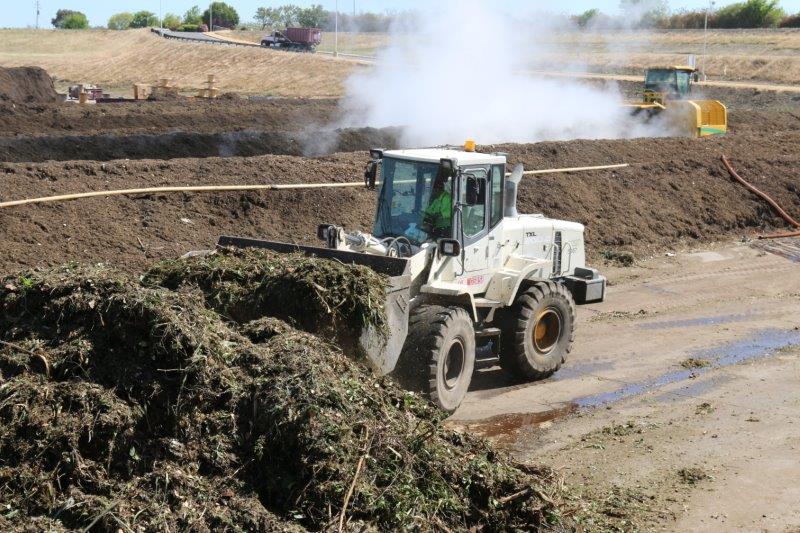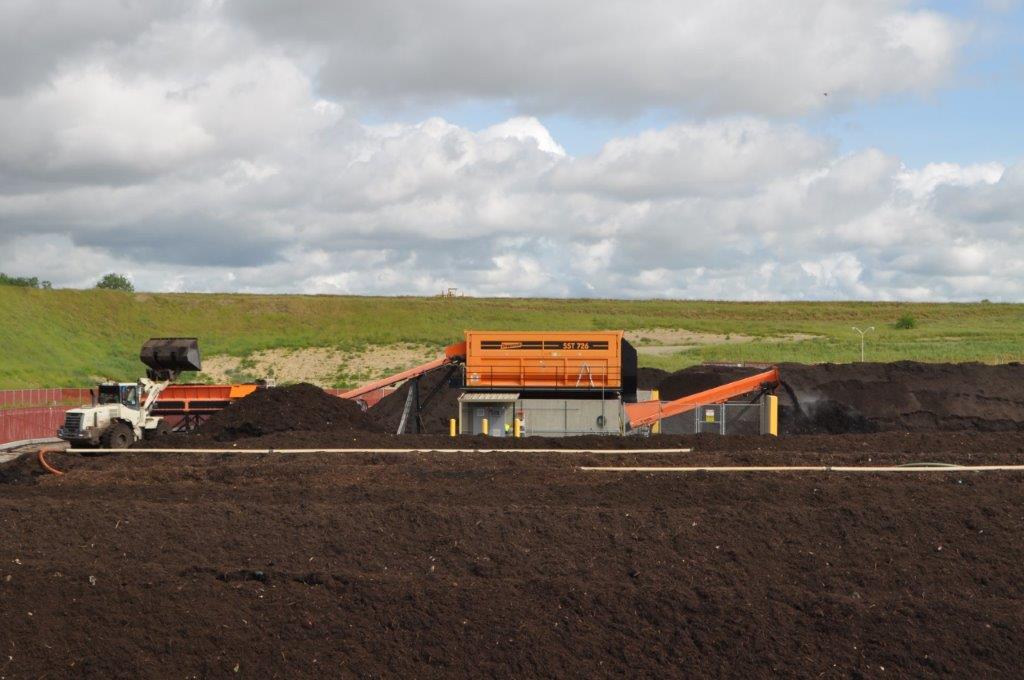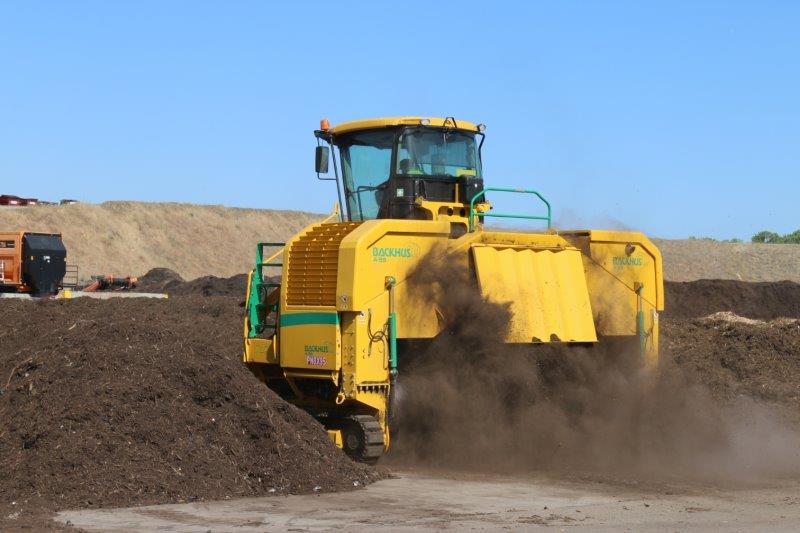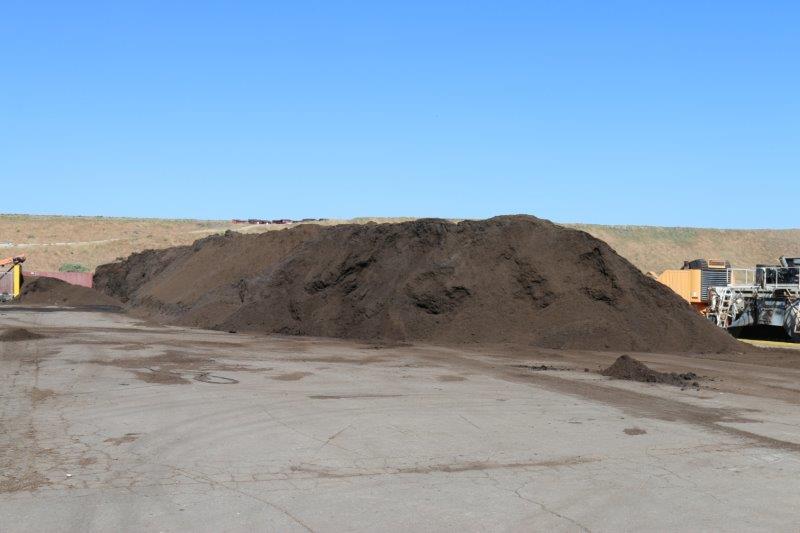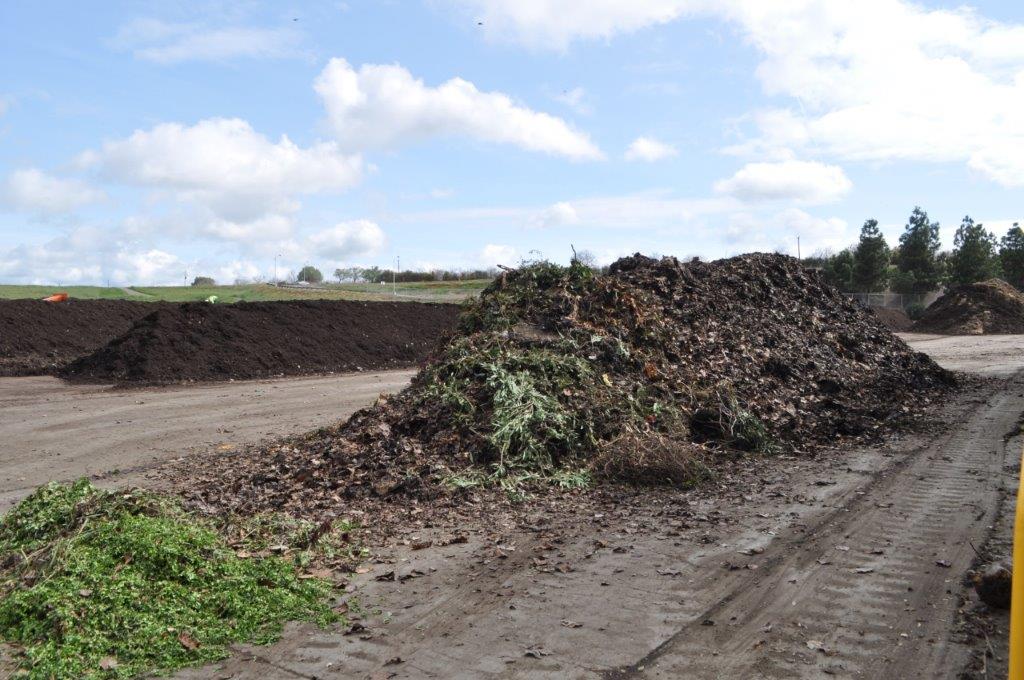Composting
Tracy Material Recovery Facility receives green waste from curbside yard and garden programs, individual self-haul customers, landscapers and the agricultural community. The green waste must first be processed to remove contamination. Each day, the green waste is loaded onto a sort line called a “Super Portable” where it is hand sorted by six to eight sorters. After the material is cleaned and all trash, debris, large branches and stumps, and animal waste are removed, it is ready for grinding.
The equipment operator scoops the cleaned green waste and loads it into the basin of the grinder. The grinder chops the green waste into smaller pieces. The ground green waste is ready to be put into rows called “windrows.”
The equipment operator moves the ground green waste into windrows for composting. The composting process occurs naturally as long as proper levels of moisture and aeration are maintained.
A machine called a compost turner straddles the windrows. The giant blades scoop and turn the piles, bringing the organic matter from the inside of the pile to the outside of the pile. This process of turning the piles is called aeration.
Windrows sit at a temperature of 140 to 160 degrees Fahrenheit. The mist rising from the windrows during the turning process is proof that the microbes are at work, breaking down the green waste into compost. With proper monitoring and care, the windrows sit for seven to eight weeks until microbial action has converted the cellulose into compost.
Once this process is complete, the compost is ready for screening. The equipment operator uses a loader to load the compost into the screener. The screener acts as a giant sifter. The compost is sifted through the screen. Large pieces of organic matter are returned to the windrows for additional processing time.
The screened compost is ready for use as a soil amendment in flowerbeds, gardens and agricultural land where it will add nutrients to the soil and will help water retention.

